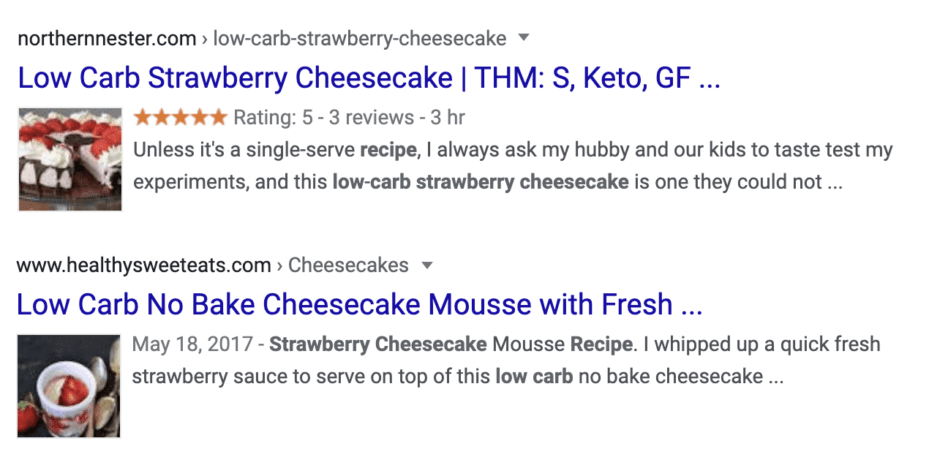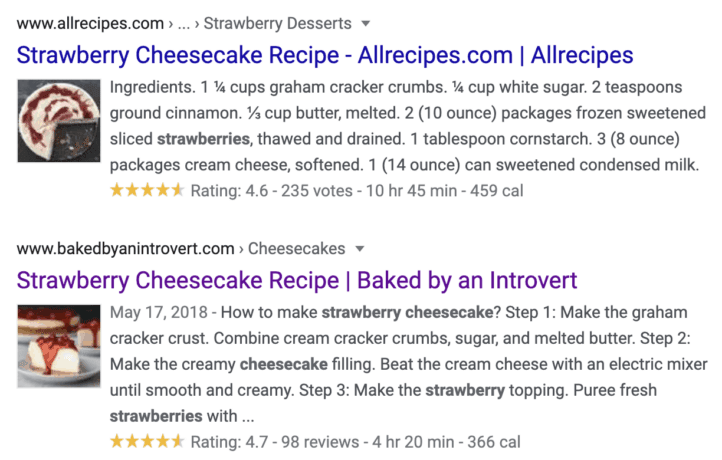Keyword Proximity: Use Your Keyphrases Together


Today in our SEO series, we’re going to explore a concept that’s essential for deploying any multi-word keyphrase, and that’s keyword proximity.
Keyword proximity is the distance between keywords, or more importantly, how close together the keywords are within a section of text.
It’s especially relevant with keyphrases containing multiple keywords — and if you’re following our advice and targeting long tail keywords, your phrases will have multiple words in them more often than not!
With a multi-word keyphrase, keyword proximity is how close together the words from that phrase appear in a given section of the page.

Let’s use an example to make this clearer. If you’ve read our previous SEO articles, you know I’m partial to my go-to “cheesecake recipe.”
In our keyword prominence post a few weeks ago, we analyzed headlines and found a page title in which the cheesecake recipe was split:
“Weekend Recipe: Foolproof New York Cheesecake”
In this case, the keyword proximity is the distance between Recipe and Cheesecake. In the grand scheme of life, yes, these words are close-ish together.
But, through an SEO lens, when it comes to the distance between the two most important words in a short, six-word sentence, they’re a lifetime apart.
A buffer of just three words, or 20 characters apart, would actually be considered very low keyword proximity in the world of SEO.
Let’s use another example from that same article:
“The Best Cheesecake Recipe — Sugar Spun Run”
In this case, as you can see, Cheesecake and Recipe appear right next to each other. The highest level of keyword proximity.
Finally, we need a middle of the road example, which wasn’t easy to find. It took a lot of digging to find results that didn’t use “cheesecake recipe” in that order, which says something about how crucial this is for SEO. But I did eventually find this one:
“BEST Blueberry Cheesecake (+ how to RECIPE VIDEO, how to freeze etc)”
Just two extra words (+ how to) and some extra characters pushed our keywords apart. We’d call this a medium proximity.

Yes, but since there’s no direct or specific recommendation from Google, we’re going to offer similar advice to what we’ve given in the past:
Keep keyword proximity in mind, but don’t obsess over character counts and percentages. Focus instead on how it applies to user experience and the click-through rate on search engine results pages.
As we’ve argued in discussions of keyword density, prominence, and beyond, blending basic SEO concepts together in a holistic, user-driven way will pay off more than getting bogged down in the weeds.
Back to the topic at hand: You can see the impact of proximity for yourself as you briefly scan Google search results of the keywords you enter.
As you read from left to right, what will catch your eye as you’re looking for a result you just typed in — your exact phrase in bold, or some words bolded and further spread apart?
First, let’s search for “Low Carb Strawberry Cheesecake Recipe” and compare two page titles to see which one catches our attention:

You’ll see that in the second result, “strawberry” appears but is cut off from the rest of the keyphrase. One of the most popular stop words, “with”, and the additional keyword “fresh” are to blame.
As a hungry reader who just searched for strawberry, you’re likely going to pick the first result and your exact phrase together from left to right.
Now let’s pick two meta descriptions, one that uses the full phrase together and one which does not:

Clearly the second result has a lot more bold text grabbing your attention.
You can quickly see why you should use your keywords as closely together as possible when optimized for a keyword phrase, particularly in things like page titles and descriptions.
In fact, if you do a couple of searches yourself for fun (or for food), you’ll see how difficult it is to find examples of sites NOT doing this due to the fact they’re not ranking.
I’d say it depends on where. If it’s in your page title, first paragraph and meta description, or anywhere optimal keyword prominence is both important and attainable, then I’d say yes.
However, there are exceptions to this.
Sometimes you’ll end up with a keyphrase that might be grammatically incorrect or awkward to use all at once. People don’t always type full sentences into Google after all.
Stop words get a bad rap, but sometimes they’re just necessary — like when they can transform a keyphrase that’s borderline incoherent to something more readable in your content.
If the phrase itself requires a break from perfect keyword proximity, that’s fine. Users and Google will both be drawn to blog posts that aren’t authored by grammatically-challenged robots.
We hope you’ll allow us to interrupt our usual cheesecake case studies for an example from the strange world of celebrity gossip that nicely illustrates the limitations of keyword proximity.
On Mediavine’s owned and operated website, The Hollywood Gossip, our keyword research often leads us to targeted phrases you simply can’t write without additional characters and/or words.
Users hearing rumors on the internets and wondering if two celebrities secretly got hitched are likely to enter nonsense keyphrases like “Kylie Jenner Travis Scott married”.
You know exactly what they’re searching for, but writing it coherently requires additional words or characters for a page title, e.g. Kylie Jenner and Travis Scott: Married?
This is about as good as we could do in a title. In a paragraph, we’d have to get even more creative, e.g. “Did Kylie Jenner and Travis Scott get married last weekend?” to have any proximity.
But the point is, that’s 100% fine.
And no, they’re not married.
![]()
If you’re still reading this, then you know all you need to know. Like other SEO concepts we’ve talked about, this is something you can implement effectively without advanced technical skills.
Keyword proximity is easy and it works, and best of all, there’s no hard and fast rule to worry about. Do the best you can within reason, don’t lose yourself or your readers in the details.
Stay up to date with the latest from Mediavine
 Eric Hochberger
Eric Hochberger
Google recently announced that any publisher passing the new Page Experience algorithm will be considered for the top story carousels in Google News. This shift comes after years of Google …
 Eric Hochberger
Eric Hochberger
Whether it’s for SEO or monetization purposes, we always encourage publishers to update old content. We’ve discussed at length how specifically to update content to improve RPM and optimize for …
 Eric Hochberger
Eric Hochberger
Today on the Mediavine blog, we’re throwing it back to 2017, famously known to SEO experts across the web as the Year of the Parboil. It was never actually known …